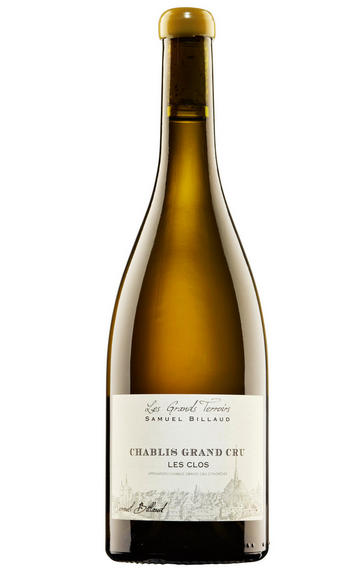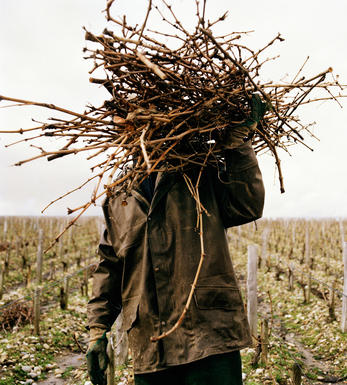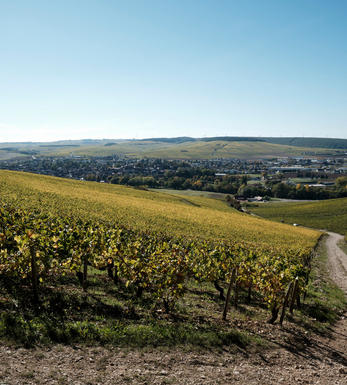
2007 Chablis, Les Clos, Grand Cru, Domaine Billaud-Simon, Burgundy

Critics reviews
David Schildknecht - 31/10/2010
About this WINE

Domaine Billaud-Simon
Bernard Billaud and his nephew Samuel produce some of the very best examples of Chablis today. The domaine has 20 hectares of vines in some of the best sites in the appellation, including the Premiers Crus, Mont de Millieu and Vaillons and the Grands Crus, Blanchot, Les Clos and Les Preuses.
In 1991 Billaud-Simon built a new state-of-the-art winery, equipped with numerous temperature-controlled, stainless steel vats. Previously the domaine had glass-lined, steel tanks, which were difficult to keep cool during fermentation. The majority of the domaine`s wines see no oak at all, with the aim being to produce Chablis of elegance, purity, balance and freshness.
These are crisp, mineral-laden wines that are superb examples of modern style, unoaked Chablis. They are delicious when young, yet age beautifully as well.

Chablis Grand Cru
These are the biggest, richest and most complex Chablis, which cover a total of 100 hectares – just two percent of the appellation. At their best, they can match the quality of a Grand Cru Chardonnay from the Côte d’Or, yet often at half the price.
They may lack their southern neighbour’s opulence, but they share the latter’s intensity and have a nervy minerality that set them apart. Inexpressive in youth, they should ideally be aged for 10 years, and can mature for up to 30 years. Styles vary according to producer, with some maturing and fermenting in stainless steel while others use barrels, sometimes even new oak.
All seven Grands Crus are grouped together on a single south-west-facing hill just north of the town. La Moutonne is an unofficial eighth Grand Cru straddling Les Preuses and Vaudésir, and is allowed to use the name on its label. The rich, fine Les Clos and the intense, spicy Vaudésir are generally considered to be the best, and are certainly the most full-bodied.
The delicate Blanchots and the racy Grenouilles are the most aromatic, while Les Preuses is full, complex and the least minerally. Valmur is fragrant, rich and smooth while La Moutonne is elegant and incredibly expressive. The vibrant Bougros tends to be the junior member of the group, but in the right hands can also be very good.
Recommended producers: Billaud-Simon, Duplessis, J.-P. & Benoit Droin.

Chardonnay
Chardonnay is often seen as the king of white wine grapes and one of the most widely planted in the world It is suited to a wide variety of soils, though it excels in soils with a high limestone content as found in Champagne, Chablis, and the Côte D`Or.
Burgundy is Chardonnay's spiritual home and the best White Burgundies are dry, rich, honeyed wines with marvellous poise, elegance and balance. They are unquestionably the finest dry white wines in the world. Chardonnay plays a crucial role in the Champagne blend, providing structure and finesse, and is the sole grape in Blanc de Blancs.
It is quantitatively important in California and Australia, is widely planted in Chile and South Africa, and is the second most widely planted grape in New Zealand. In warm climates Chardonnay has a tendency to develop very high sugar levels during the final stages of ripening and this can occur at the expense of acidity. Late picking is a common problem and can result in blowsy and flabby wines that lack structure and definition.
Recently in the New World, we have seen a move towards more elegant, better- balanced and less oak-driven Chardonnays, and this is to be welcomed.


Buying options
Add to wishlist
Description
Another quite exceptional wine from this great Grand Cru vineyard. The fruit notes include pears at their perfect moment of ripeness. The wine is dreamily well balanced with mazing energy behind. A magical, complete Chablis for the long term.
(Jasper Morris MW, Burgundy Buyer)
wine at a glance
Delivery and quality guarantee